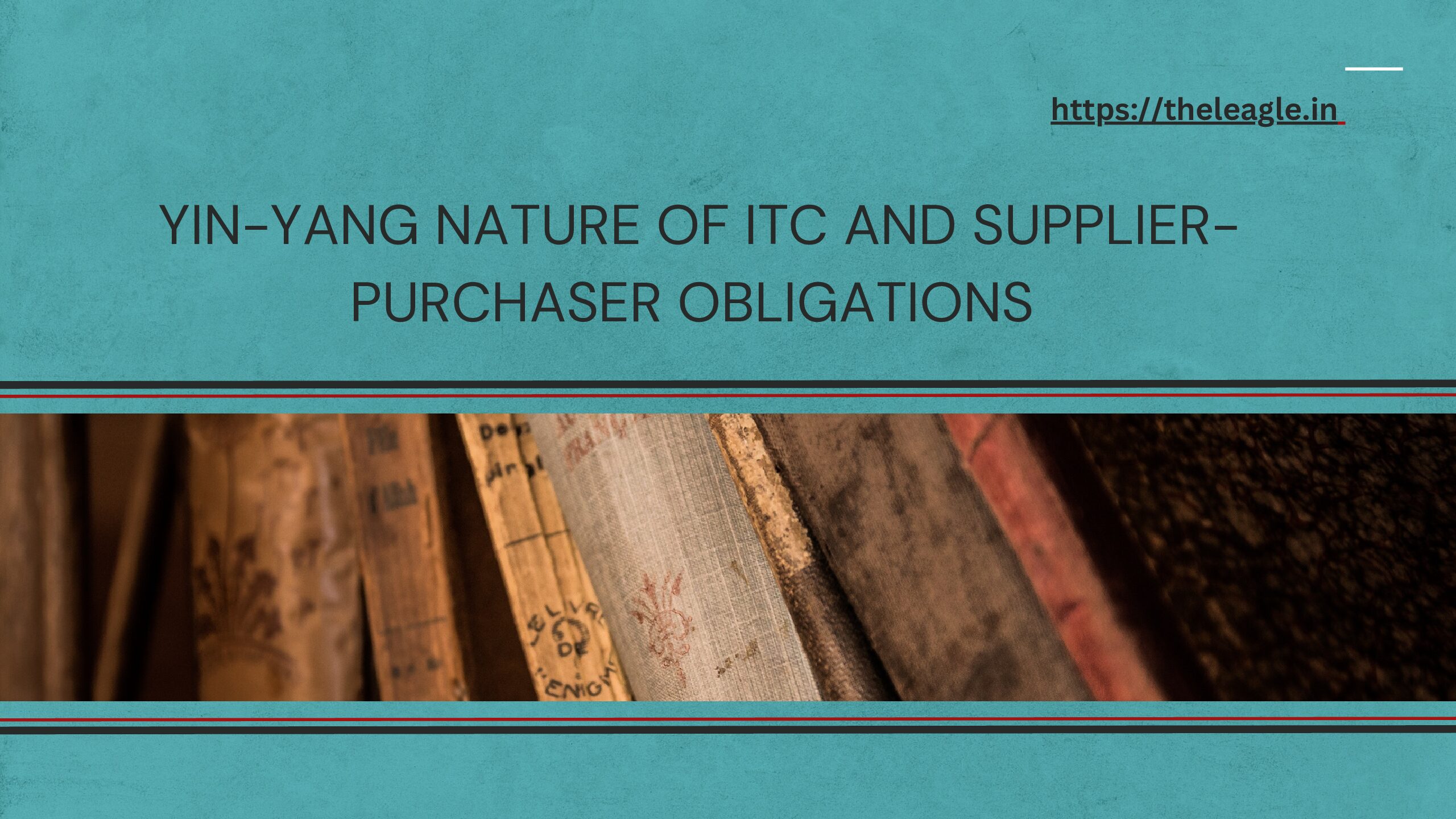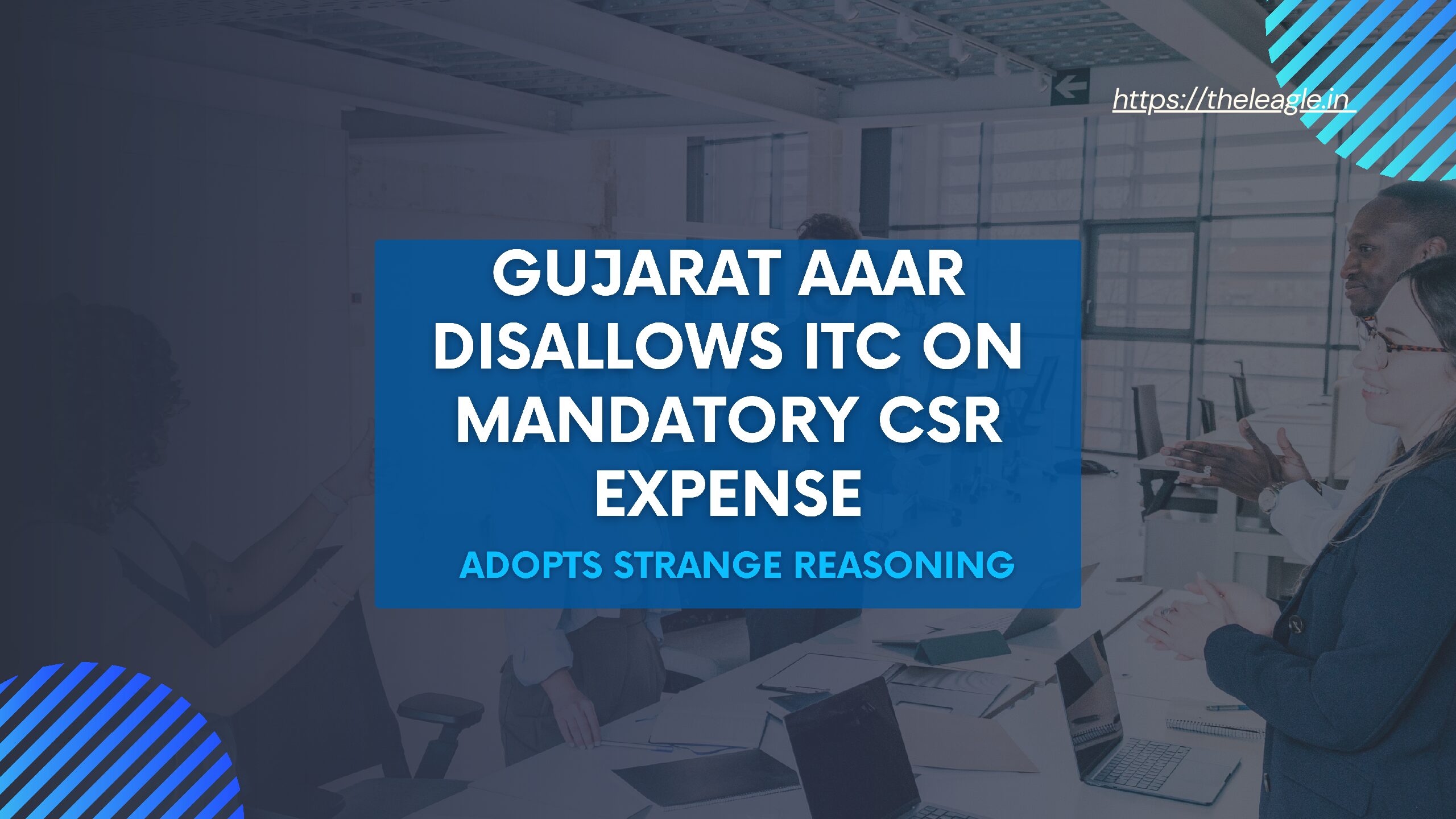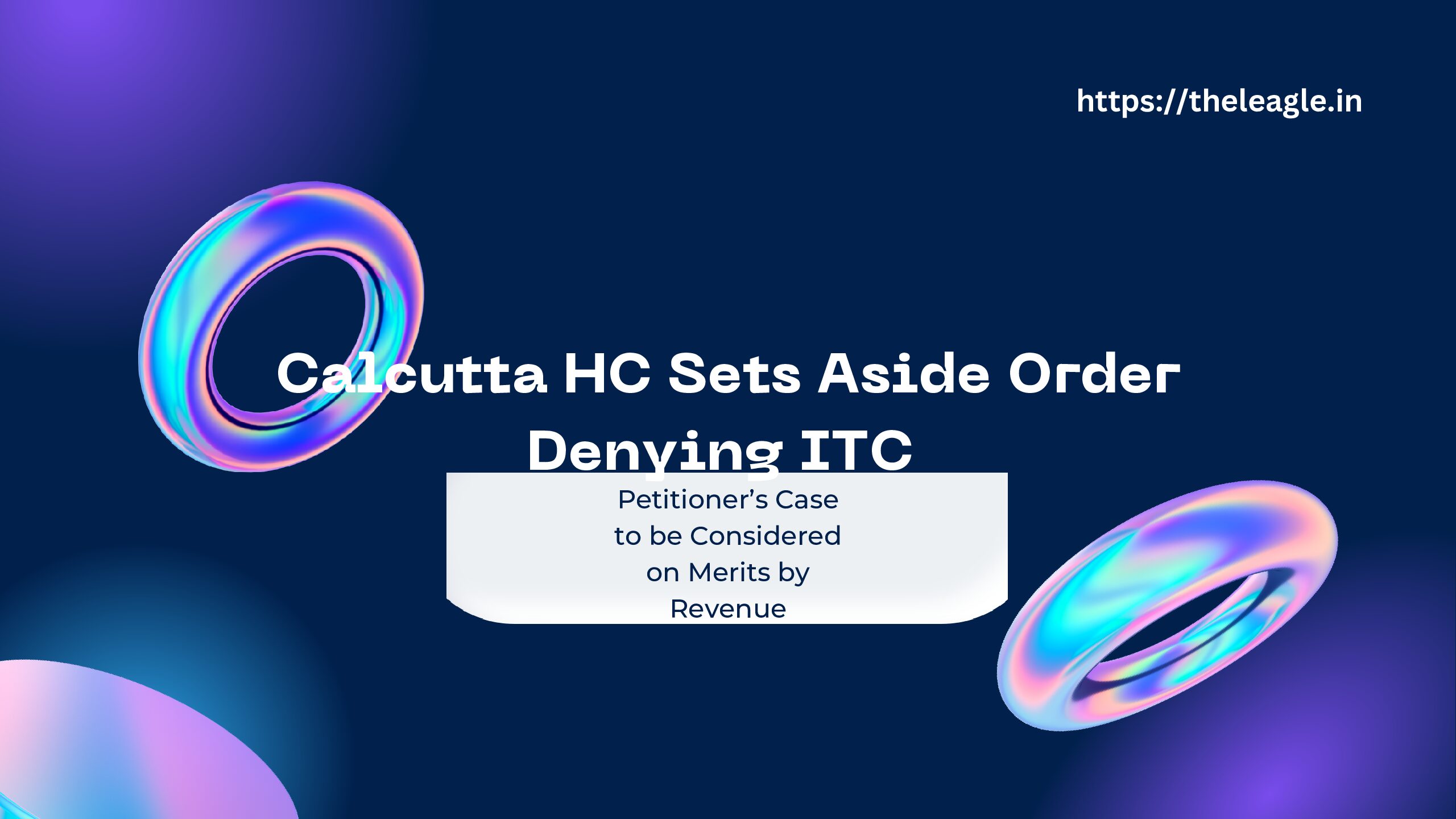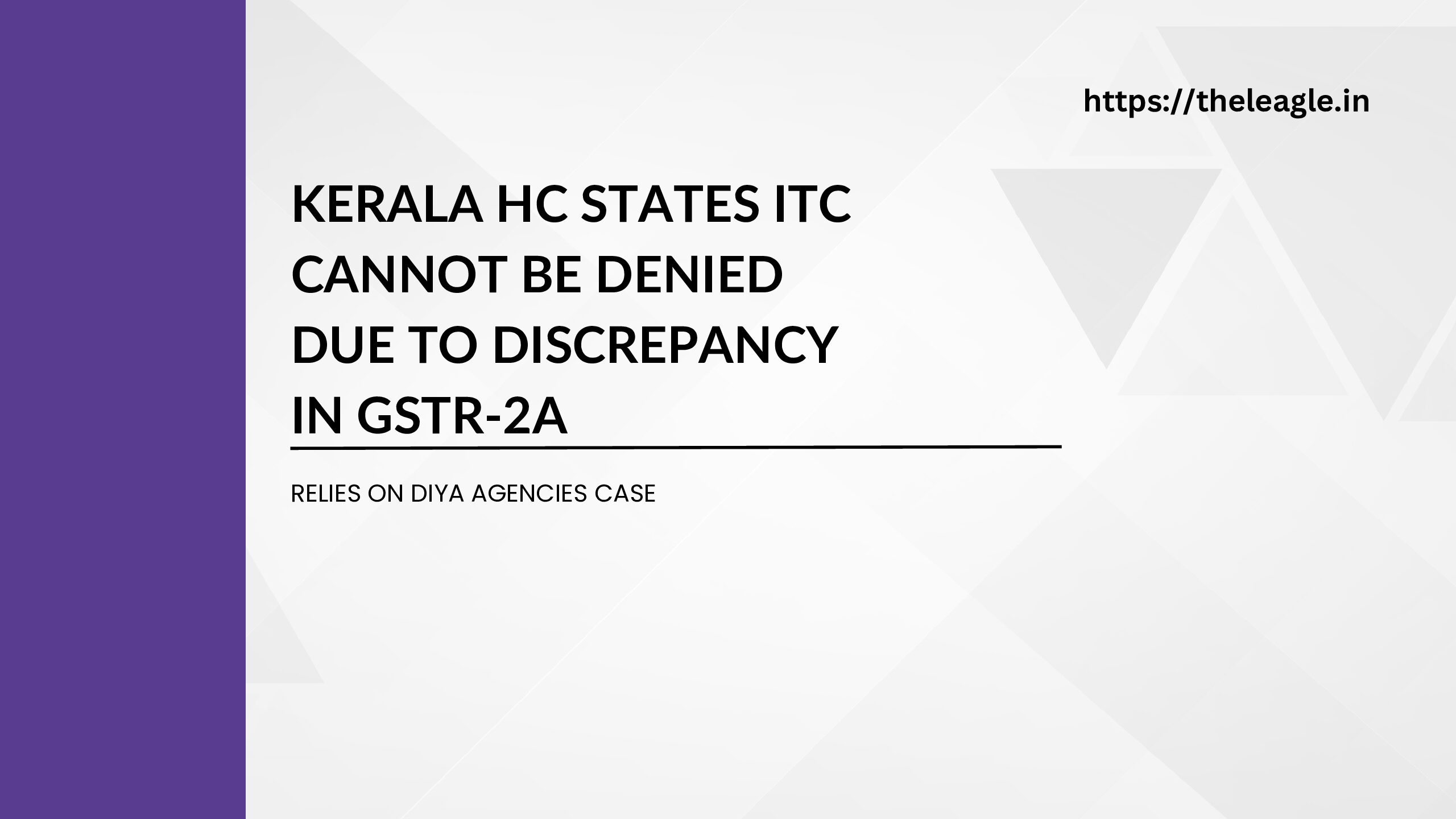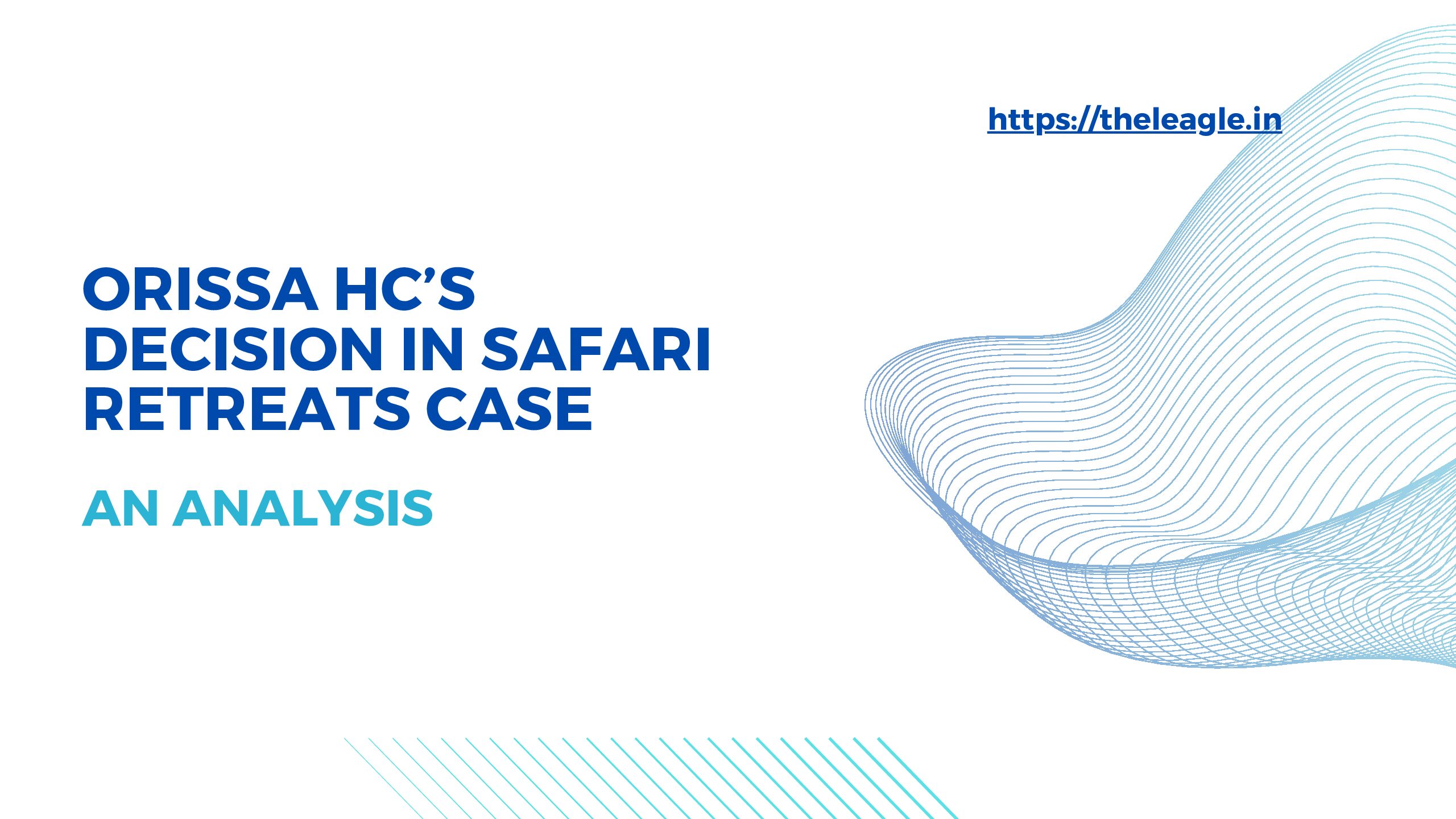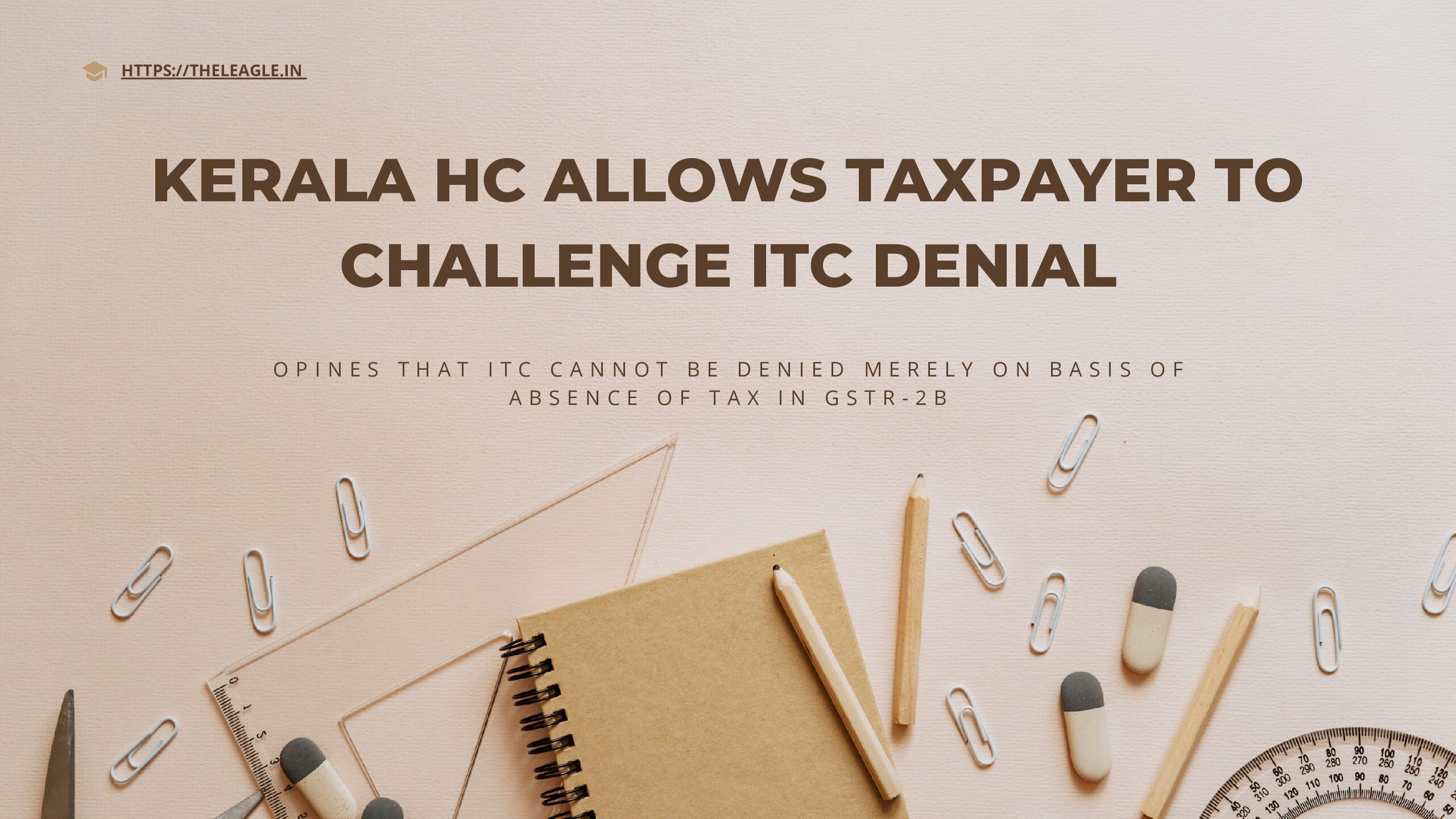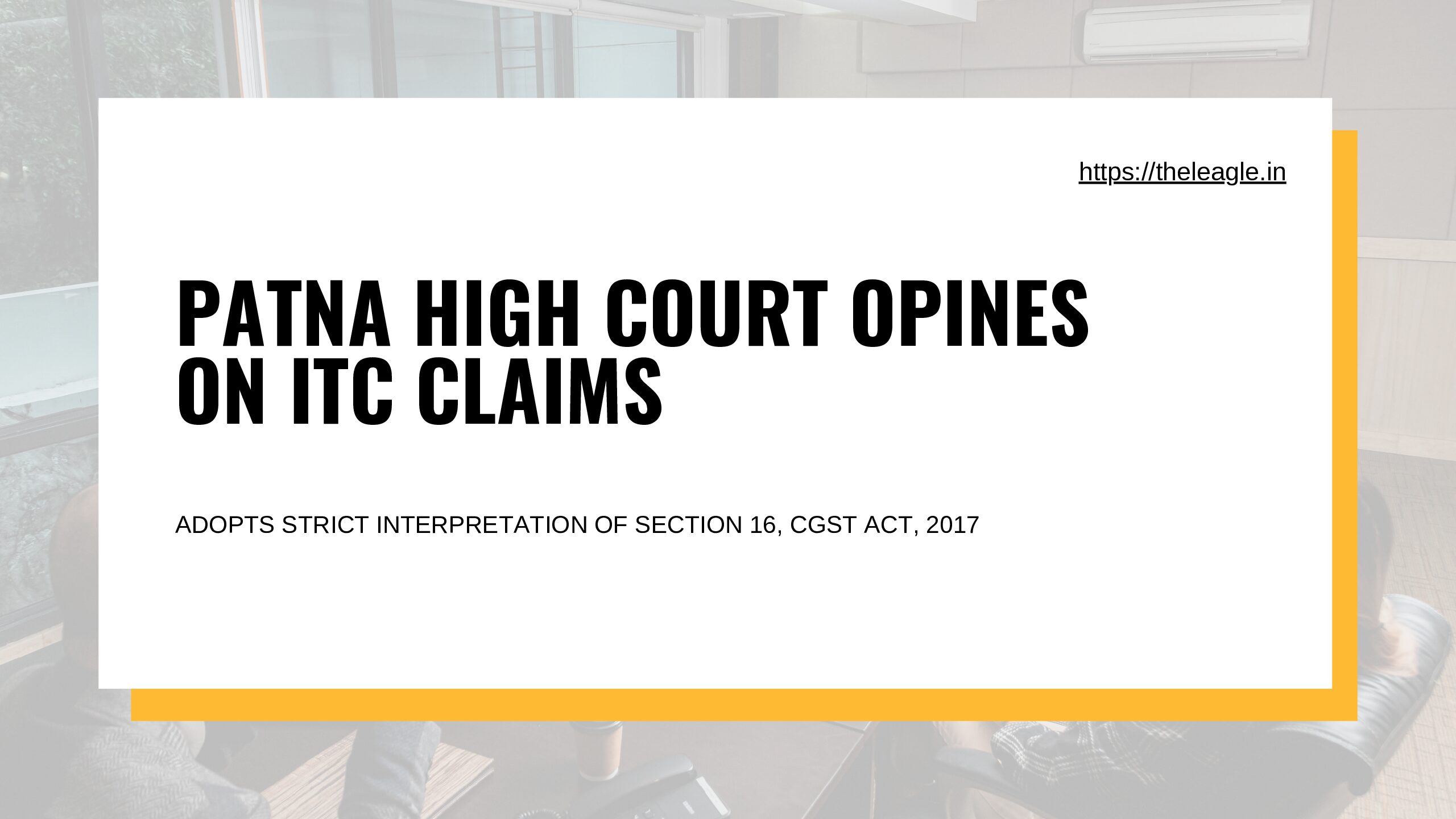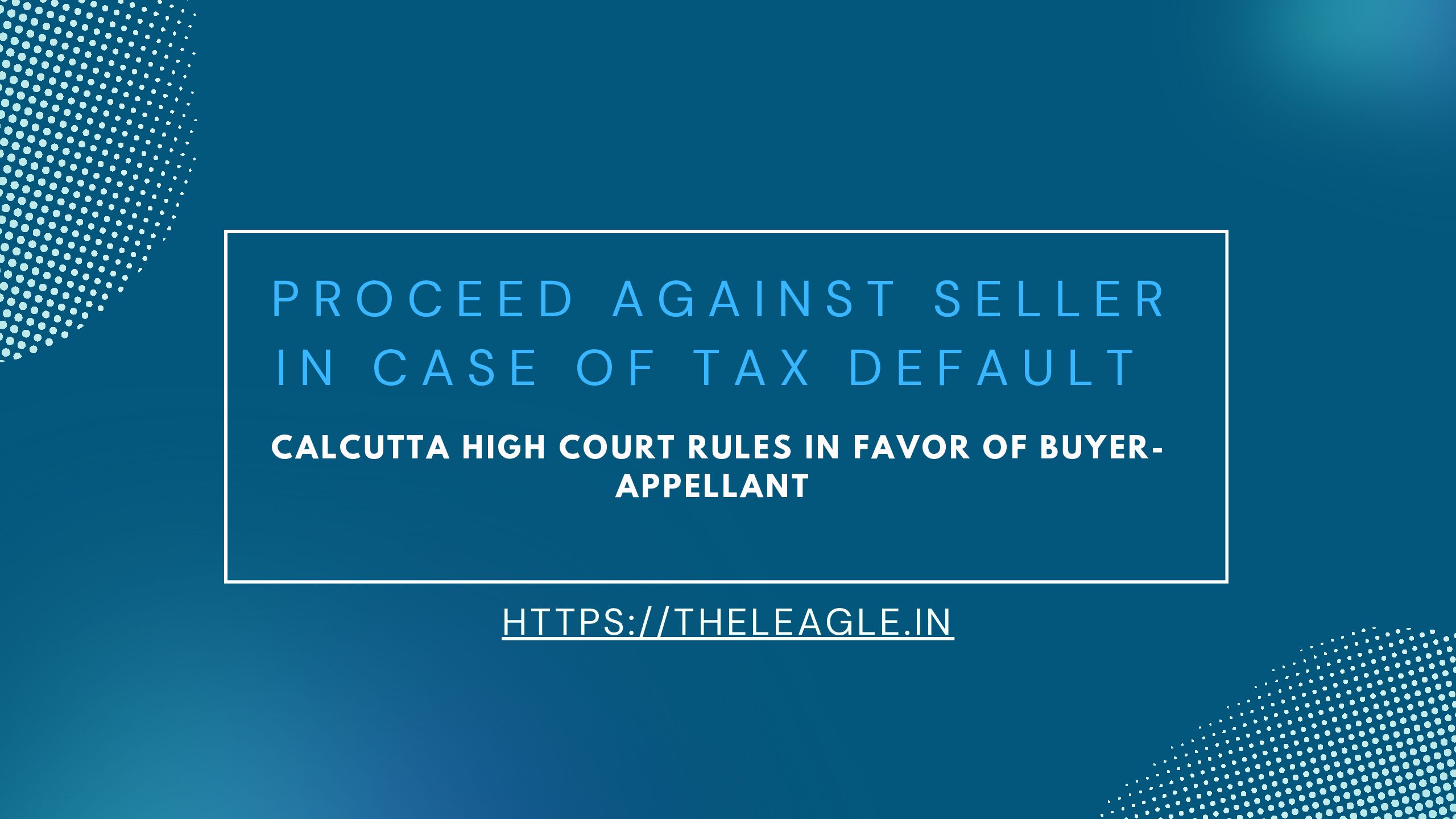Introductory Questions
Let me start with a question: how does one discover legislative intent in a provision of tax statute? Through a plain reading of the provision or through a subsequent statement by the State’s legal counsel stating its intent? Positivist thinking would point us to the former, and rightly so. A statement, even a sworn statement in a court shouldn’t override what is contained in the statute. Deference to the legislature cannot extend to a point where despite what the statute contains, court interprets the provision based on legislature’s statement explaining its intent.
The question in your mind may be: why am I asking this question? Well, for those who follow tax developments, you may already know. For others, I’m asking the question in the context of Safari Retreats case and the latest amendment to CGST Act, 2017 via the Finance Act, 2025.
One key question that the Supreme Court had to answer in Safari Retreats case was: Did the legislature intentionally use the conjunction ‘or’ instead of ‘and’? Or did the legislature commit a mistake? A simple question that acquires tremendous urgency if a taxpayer needs the answer to assess its tax liability which in this was a few crores.
During the hearing, the State’s counsel argued that use of the conjunction ‘or’ was a legislative error and further pressed that ‘or’ should be read as ‘and’. What should have been the ideal response of the Supreme Court? One view – subscribed by the State – is that Supreme Court should have declared ‘or’ means ‘and’ and interpreted the provision accordingly even if it meant throwing all grammar and interpretive rules out of the court complex. Or was there more justification in the Supreme Court responding the way it did: legislative intent can only be revealed by the legislative text and not by the State counsel’s statement about the text. And in doing so, restrict the amount of deference that courts accord to the legislature in tax laws.
And equally importantly, how should we respond? Resign to yet another retrospective amendment to a tax statute and raise our hands in exasperation while letting out a huge sigh. Or do we try to understand this entire episode like a puzzle and use it as an example of how Indian State approaches tax policy. I prefer to do the latter, and hence this article.
‘Or’ Means ‘And’
I’ve commented on the case in detail here and here. In this article, I intend to provide a limited overview of the controversy with an aim to highlight Indian State’s tax policy choices.
In 2019, the Orissa High Court allowed taxpayer to claim Input Tax Credit (‘ITC’) on construction of a shopping mall. In 2024-25, one of State’s arguments before the Supreme Court was that use of ‘or’ instead of ‘and’ was a legislative error. The reason for the argument, from a revenue perspective, was straightforward: it would ostensibly allow the State to block the taxpayer’s ITC claim. But the State was aware of the ‘legislative error’ since 2019, why not correct the error via a legislative amendment and bury the issue instead of making elaborate arguments before the Supreme Court? Commenting on the same the Supreme Court in its judgment observed the following:
The writ petition in which the impugned decision was rendered is a six-year-old writ petition. If it was a drafting mistake, as suggested by learned ASG, the legislature could have stepped in to correct it. However, that was not done. In such circumstances, it must be inferred that the legislature has intentionally used the expression “plant or machinery” in clause (d) as distinguished from the expression “plant and machinery”, which has been used in several places. (emphasis added) (para 43)
As is evident, the Supreme Court rejected the State’s claim of an error. If use of ‘or’ was indeed an error, there was ample time for the State to step in and rectify it. And its failure to do so, in my books, counts as lack of bona fide. For the Supreme Court it was sufficient to dismiss the entire argument and proceed solely on the basis of what was written in the statute.
What did the State achieve by not amending the law and correcting what it claimed was a ‘legislative error’? For one, if the Supreme Court had actually ruled that ‘or’ should be read as ‘and’, it would have armed the State with a decision that could have been conveniently used by it to block ITC in the future as well.
Second, if the Supreme Court refused to interpret ‘or’ to mean ‘and’, the State could have claimed that the decision did not reflect ‘legislative intent’. Both things did happen. The latter is no longer a surprise. Each time the State loses a major tax case, its response is that the judicial decision does not reflect legislative intent. And subsequently, it leads to an amendment of the provision in question. And even more often, the amendment is given retrospective effect.
Legislative Intent – Legislative Error
The Supreme Court in its above cited paragraph makes it sufficiently apparent that legislative intent must be reflected through the statute itself. If the State claims that a legislative error crept into the statute, it should have rectified it in the intervening 6 years it had to act on it.
Legislative intent thus cannot be superimposed on a statute by the State on discovering its error or mistake. That would upset the balance of power in State’s favor and would violate a cardinal rule of tax law interpretation, i.e., strict interpretation of tax statutes is necessary to determine the taxpayer’s liability.
But does that mean that legislative error can never be acknowledged by courts? Apparently so.
One, there is no telling if an error is truly an error. In Safari Retreats case, the petitioners pointed out that:
In the model GST law, which the GST Council Secretariat circulated in November 2016 for inviting suggestions and comments, the expression “plant and machinery” was used both in clauses (c) and (d) of Section 17(5). However, while enacting the law, the legislature has advisedly used the expression “plant and machinery” in clause (c) and “plant or machinery” in clause (d) of Section 17(5). Therefore, the intention of the legislature cannot be brushed aside by contending that the use of the word “or” in Section 17(5)(d) is a mistake of the legislature. (para 9)
In such circumstances, who is to know if the legislature intentionally replaced ‘and’ with ‘or’ when finalising the text of the bill or an error crept in while editing the Model law. Presumably only the State can reveal the mystery through detailed document history and accompanying notes on the provisions. But do we want to go down that rabbit hole. Forget us, I doubt the State would like that like that level of transparency in law making.
Second, it would defeat a core tenet of not just tax law but also law in general. Tax liability is as per the law that exists and not what the law was intended to be. A taxpayer has no way of knowing what the legislature ‘intended’ to enact except by interpreting the provisions as they exist. And if one argues that the legislative debates, and other pre-legislative reports would provide a clue, it is a heavy burden to impose on the taxpayer. Then not only must the taxpayer know the law but also whether the law contains an error or not. Hardly just or fair. And one would argue such a stance is also devoid of common sense.
Puzzle of Indian Tax Policy
Hidden in the steps of Safari Retreats case and its aftermath is the puzzle of Indian tax policy decisions.
One, why wait for the Supreme Court’s decision and then amend the provision retrospectively? Because beyond the immediate urgency of losing or wining a case, was a question of policy. Do we allow taxpayers to claim ITC on construction of shopping malls when they further rent it for business? While a timely amendment of ‘or’ to ‘and’ may not have answered the question with certainty, it would have provided a clear signal of proactive policy making including correcting errors. Instead, the post-decision amendment reveals a policy of amending laws as per convenience.
Two, where were the States? Since the entire dispute centred around CGST Act, 2017 we expect response from the Union, but GST is a federal levy. Why didn’t any State openly and persuasively argue for an amendment and perhaps end a long winding litigation? It was only after the Supreme Court’s judgment, that States were visible. But just about. States were on board for the GST Council’s recommendation for amendment. Or at least no State objected to the amendment. So, my impression is that either ALL States were either clueless about the litigation or all of them unanimously approve retrospective amendments to GST laws instead of proactive amendments to thwart resource consuming litigation. Maybe, this is the kind of uniformity that was aimed through GST.
Third, why file a review after deciding to introduce the amendment? Again, it seems the Court’s stamp of approval or its views on the amendment will prevent sprouting of similar issues from the provision. In this case, though the litigation may not end because even the amendment may not prove enough as courts will still need to interpret the phrase ‘plant and machinery’. But a review seems like a circuitous way of making tax policy when there can be direct and straightforward ways. Only we prefer to be clever by half and like to prevent transparency on fundamental tax policy issues. Else, the State may be held to its word and that is not something it will enjoy.
Way Forward
The promise of no retrospective amendments to GST laws was buried long ago. And now it is dead. We can only hope for a more sane approach to tax disputes and a saner reaction to court decisions that are not in the State’s favor. Else, the familiar cycle of dispute, decision, amendment will continue till perpetuity until one fine day we feel the need to ‘simplify’ GST by removing all the Provisos and Explanations which were added via numerous reactive amendments.
